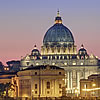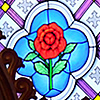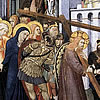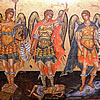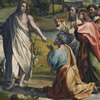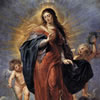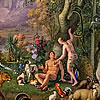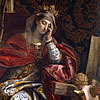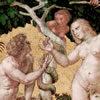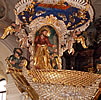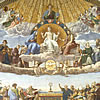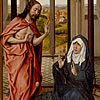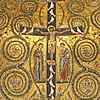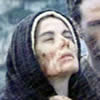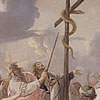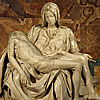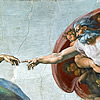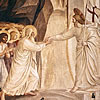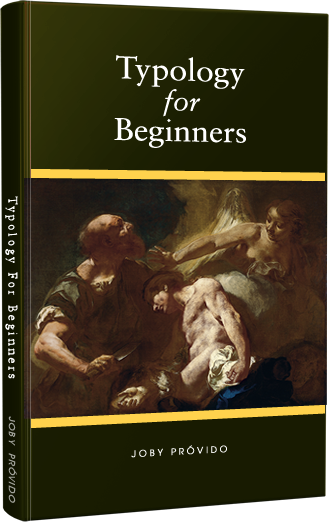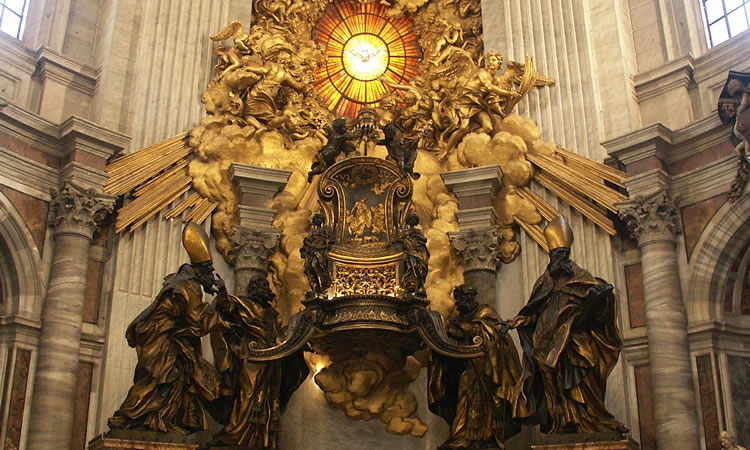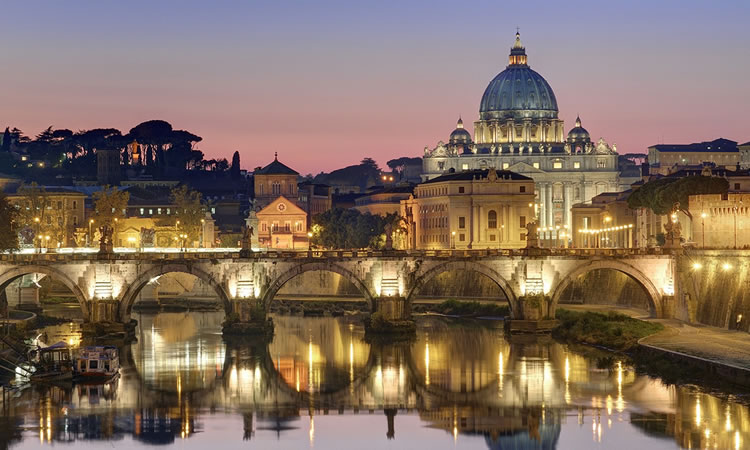

St. Peter's Square
Saint Peter’s Square was built by Gian Lorenzo Bernini in between 1656 and 1667 – a good thirty years after the new Saint Peter’s Basilica was built. The intention was to have an area “built so that the greatest number of people could see the Pope give his blessing, either from the façade of the church or from a window in the Vatican Palace.” (Norwich, John Julius. Great Architecture of the World. 1975)
When viewed from the top we can see two Tuscan Colonnades that are four-columns wide. They each form a semi-circle as if they are arms embracing people in the square. In the words of Bernini:
Considering that Saint Peter’s is almost the matrix of all the churches, its portico had to give an open-armed, maternal welcome to all Catholics confirming their faith; to heretics reconciling them with the Church; and to the infidels, enlightening them about the true faith.”
His language might not use “politically correct” words for today’s more sensitive readers, but if we dwell on the “spirit” of the text, Bernini is trying to express, in an architectural way, the universality of the Church in the sense that it welcomes everyone regardless of race, culture, social status, etc.
The word “catholic” comes from “kata-holos,” which means “according to the whole” or in a sense, “universal.” It is one of four marks of the Church which also include: “one”, “holy”, and “apostolic.” It should be familiar to Catholics considering we recite it each Sunday as part of the Nicene Creed right after the homily. Although God focused on Israel as his chosen people, it is from them that the Kingdom of God cast out its net into the four corners of the earth. The apostles understood it this way, which is why we consistently read in the Book of Acts how they and their disciples went on missionary journeys to preach the Gospel to all people (represented by “the Gentiles.”) The embracing arms of the colonnades architecturally express the universality of the Church in this sense.
The other idea the Bernini brings forth is that the Church is a “mother” when he subtly mentions, “maternal welcome.” From the Old Testament, we always hear of God alluding to Israel as his bride. While Israel is an idiomatic terminology for “God’s chosen people” it can be applied to the Church for it, too, in a larger sense is an assembly of his people. (The word “church” comes from “ecclesia” which means assembly.) In the Book of Revelation, we once again read of God in a wedding banquet and excited to meet his new bride, the New Jerusalem – another symbol for God’s people. In the Gospels, we read Jesus using several parables of bridegroom and bride and usually in the context of the Kingdom of God. So, in Scripture, God’s bride is, collectively, his people. This is why we say the Church is ”\the bride of Christ.”
The interesting thing to note is that “bride” means “vessel of life” or “mother”. We believe the Church is a “mother” for it is through the sacraments entrusted to her authority that we are aided in reaching spiritual and everlasting life. Just so there is no ambiguity in this, it is Christ who redeemed us – and there is nothing the Church can do to save us on her own – however, Christ gave authority to the bishops and priest in the Church he established to baptize, forgive sins, heal, etc. as tools of his saving graces. Because the Church is the vessel of these life-giving sacraments, we see her as our mother. This is why we sometimes hear people refer to the Church as “Our Holy Mother, the Church.”
To expand this meaning, just as a mother teaches her children, so does the Church teach her children through the Magisterium – the teaching office of the Church that is composed by the Pope and Bishops. This, too, is another example of the Church’s “catholicity” because it is “according to the whole” that the Church teaches when the Bishops are one with the Pope in elucidating doctrine. (The Church does not create doctrine. She learned it from the teaching of Christ as handed down by the apostles. All she does is explain it especially when new situations arise.)
One symbolic image of the Church is a boat – an ark. In the Gospels, we read of Christ teaching from the boat of Peter. Today we can see the Church as the boat where the teaching of Christ is preached from, and an ark that has the means to save all who are in it from deadly flood (think Noah).
Bernini’s colonnades tell us all people are welcome into her loving arms, keeping them safe from death and harm.



